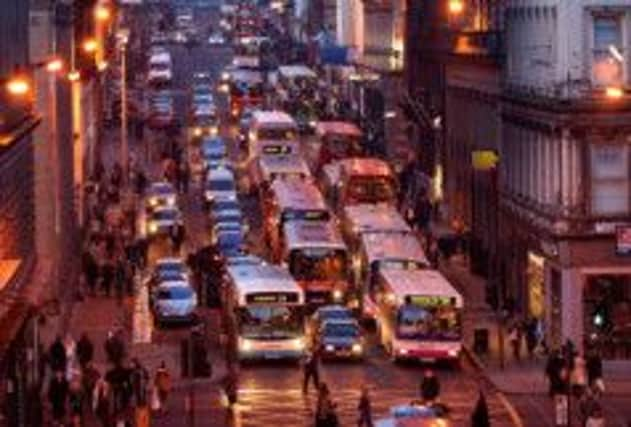Glasgow 2014: Spectators encouraged not to drive


Organisers of next year’s Glasgow extravaganza aim to have all ticket-holders travelling by public transport, or walking or cycling. They will be offered free travel as an inducement, while those thinking of driving will be warned: “You will not get close to the venue”.
Cultural “distractions” such as arts events on routes to venues will be laid on to encourage games-goers not to take their cars. Traffic-free paths such as the Clyde walkway between the city centre and the Scottish Exhibition and Conference Centre (SECC) will be heavily promoted.
Advertisement
Hide AdAdvertisement
Hide AdMotoring groups said Glasgow faced a greater challenge than London in that public transport networks were not as comprehensive.
A total of 1.3 million tickets will be on sale for the 12 days of action in July next year, with up to 180,000 people a day due to attend events. Officials hope there will be enough spare seats on buses and trains during the less busy school holiday period to accommodate games travellers. Extra trains will run to stations near venues, such as Dalmarnock in the east end, Exhibition Centre, and Mount Florida for Hampden. Extensive parking restrictions will be imposed around the sporting venues, with security cordons limiting access to main access points.
John Fryer, head of transport for the Games, said Glasgow would be seeking to emulate London’s travel success in the 2012 Olympics.
He said: “The strategy is based on a public transport games. In London, there was a similar approach, which was delivered very well. People who drive will not get close to the venue and we recognise there is some education to do.”
The Games’ strategic transport plan stated: “Parking and access controls will be strictly enforced in the streets surrounding venues in order to meet the Games transport objectives.”
At one of the busiest venues – the 44,000-capacity Hampden Stadium on the south side, which will host athletics and the closing ceremony – entry will be via a single point to the east.
Parking will be severely restricted over a large area and further moves are planned to cut traffic in the area to make it easier for spectators to walk from buses and trains, and residents to get to and from their homes and businesses. Other major venues include Celtic Park, where 60,000 people will watch the opening ceremony, and the 50,000-capacity Ibrox Stadium, where the rugby sevens will be staged.
The SECC complex will have tens of thousands of people watching sports such as gymnastics, boxing, judo and wrestling.
Advertisement
Hide AdAdvertisement
Hide AdIn the east, the Emirates arena, hosting badminton, and the Sir Chris Hoy Velodrome, can accommodate 9,000 people, with a further 5,000 each at Scotstoun for squash and table tennis, and at the Glasgow Green Hockey Centre and Tollcross International Swimming Centre.
A series of park-and-ride sites are being planned for areas with poor public transport and for drivers travelling into Glasgow.
Spectators would be taken to venues by shuttle bus.
A “games route network” of roads linking venues for transporting athletes and officials will involve further parking restrictions, right turns being banned and alterations to up to 220 sets of traffic lights to ease traffic flow.
Automobile Association president Edmund King said: “Despite all the prophets of doom, the London Olympics worked well as a car-free event. Extra public transport was made available and commuters were encouraged to stay away.
“London started from a better public transport base than Glasgow, so Glasgow has a greater challenge to increase capacity.
“Most drivers will appreciate that the Commonwealth Games in Glasgow is an unique event so should be willing to forgo their wheels of the benefit of a successful games.”
Neil Greig, policy and research director of the Institute of Advanced Motorists, said: “For any event of this magnitude, there is no doubt that public transport has to provide the lion’s share of the people movement that will be so important to its ultimate success.
“This is new for Glasgow drivers but should not come as a surprise given the way the Olympics worked. London, however, had a much more extensive train, tube and bus system to fall back on than Glasgow.
Advertisement
Hide AdAdvertisement
Hide Ad“The key will be early and clear information, and ample park-and-ride options across the west of Scotland.
“This will be a challenge as most train station park-and-ride sites are regularly full and bus-based park-and-ride is virtually nonexistent in the west.”
Twitter: @AlastairDalton